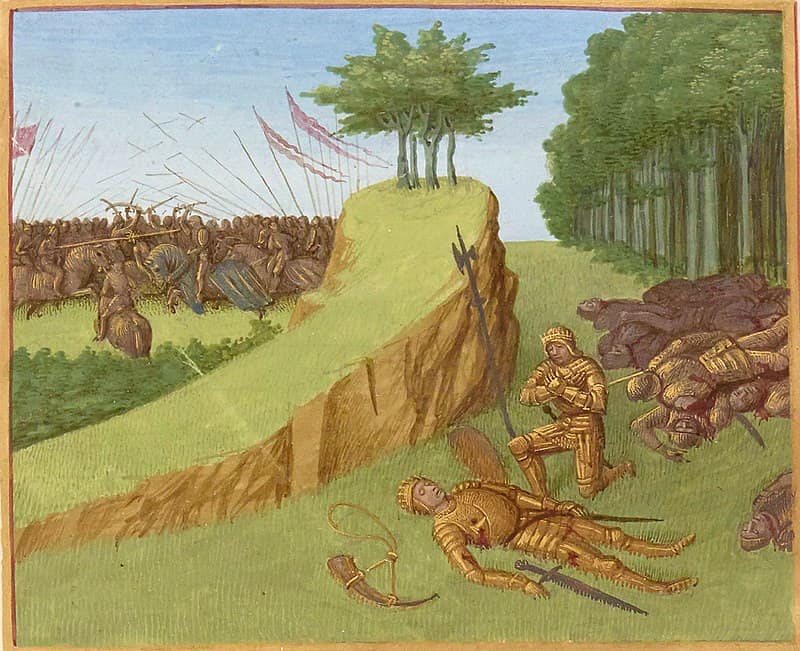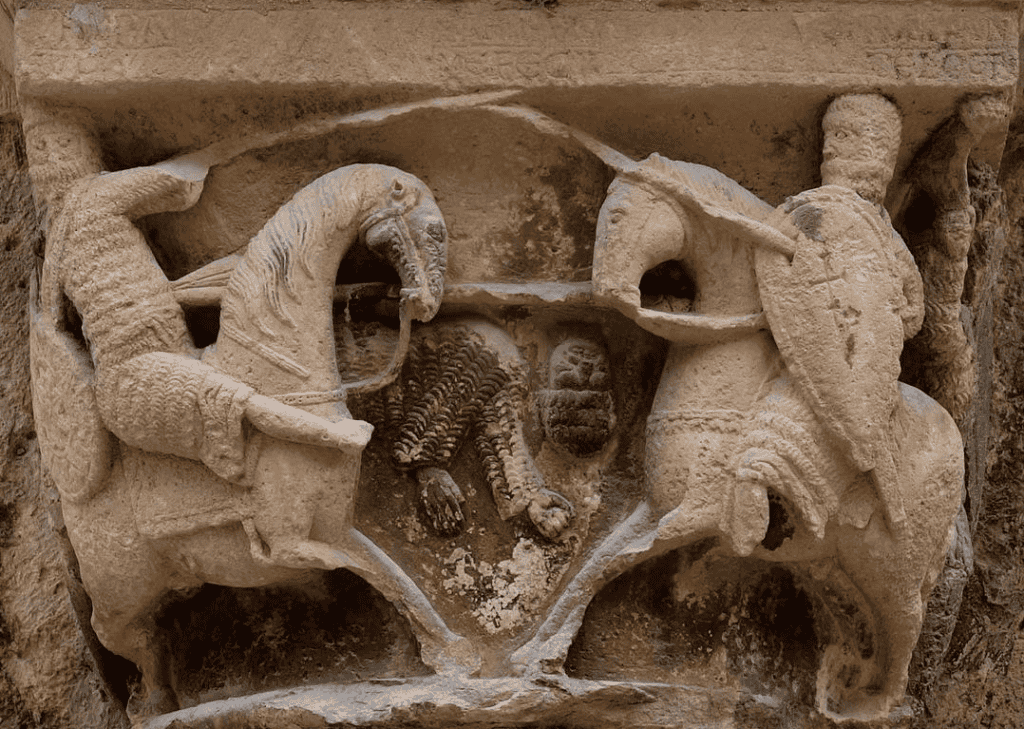One of the most famous legends that takes place on the Camino is the story of the death of Roland. Indeed, most pilgrims are familiar with the knight’s death at the Roncesvaux Pass in the Pyrenees when he was ambushed by Saracen soldiers. This event supposedly took place near the Monastery of Roncesvalles in the year 778. Roland was a French knight and the nephew of Charlemagne. He was also in charge of leading the rear of his uncle’s army as they returned to France.
The story became famous when it was retold in the 11th century in the Chanson de Roland epic poem. Since then, it has become one of the most renown medieval legends in Europe and medieval artistic depictions of the story are widespread.
However, there is a prologue to the story that is less known. This is the story of Roland’s combat with the Saracen Giant Ferrugat. This battle is depicted on the sculpture in relief at Roncesvalles and first appeared in the Pseudo-Turpin Chronicle. This chronicle is also known as Book IV of the Codex Calixtinus.
The Story of Ferragut the Saracen Giant
Ferragut was the Saracen giant that was in charge of defending the town of Nájera from Charlemagne’s troops. Nájera is a town that still exists on the Camino de Santiago in the region of La Rioja. There is a small hill called the Poyo de Roldán just before the town where the combat supposedly took place.
Ferragut was a giant and virtually invulnerable. The Chronicle also describes him as being a direct descendent of Goliath from the Old Testament. After defeating 24 French knights, Charlemagne allowed his nephew Roland to challenge Ferrugat. The combat lasted three days. At night, the knights would stop to rest and resume the next morning. On the second evening, Roldán courteously put a stone under Ferrugat’s head as a pillow. For reasons we cannot fathom, the grateful Ferrugat then tells Roland where his only weakness is.
On the morning of the third day, Roland uses this information to kill the giant by thrusting a spear into his navel. Ferrugat’s navel was his only vulnerable spot.
We are not sure if this can be considered good sportsmanship.









